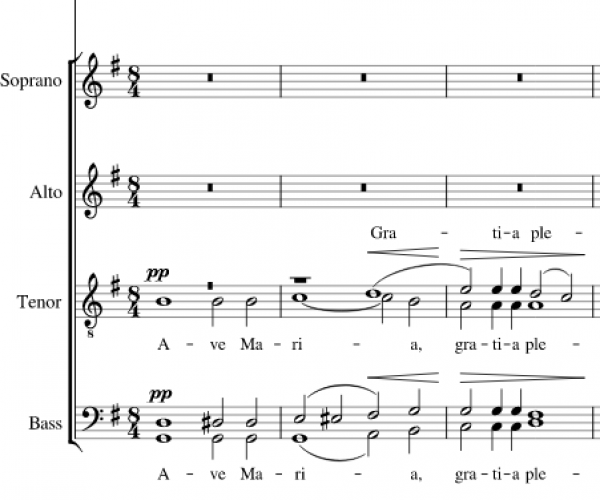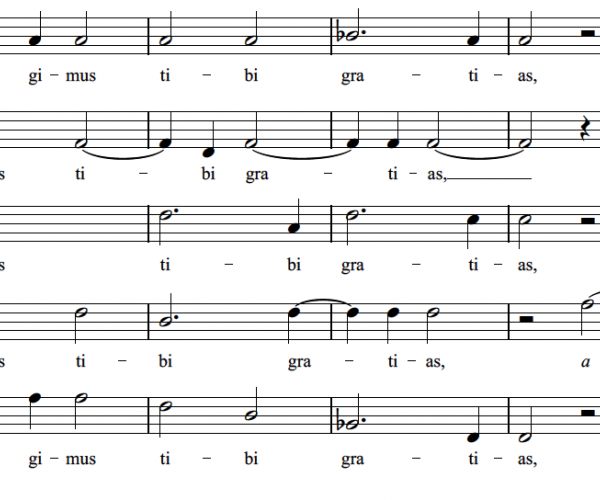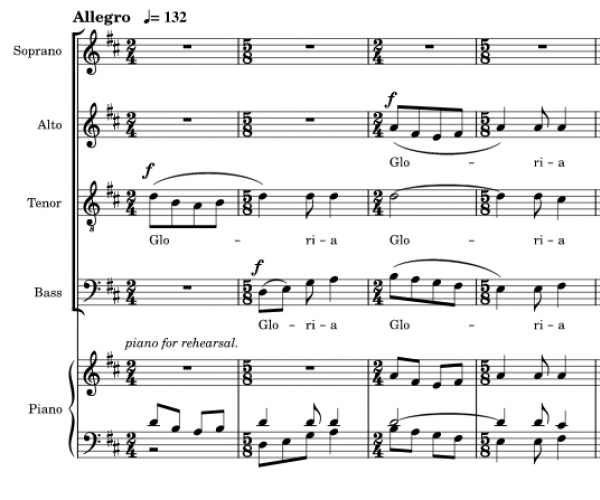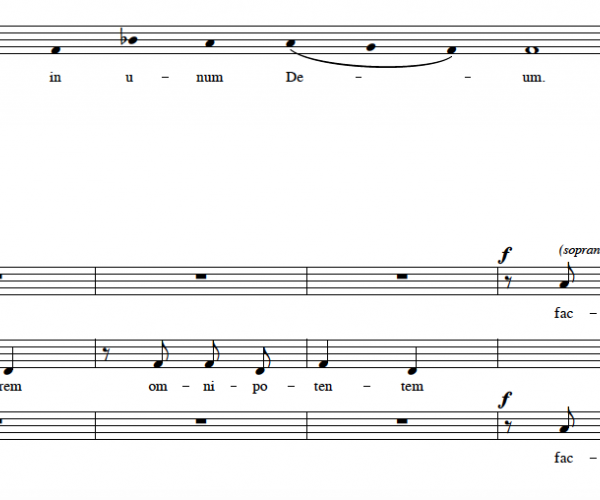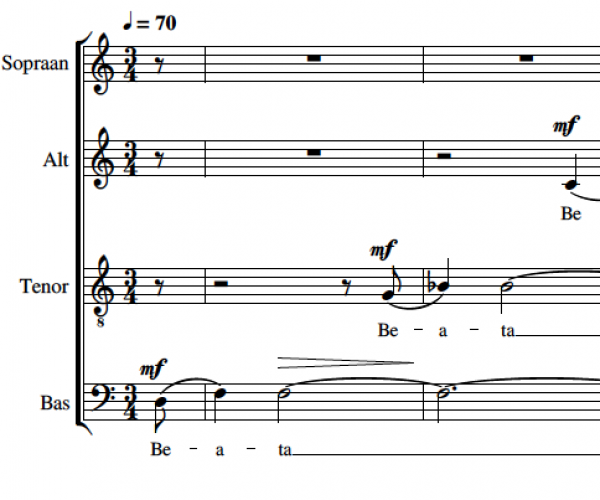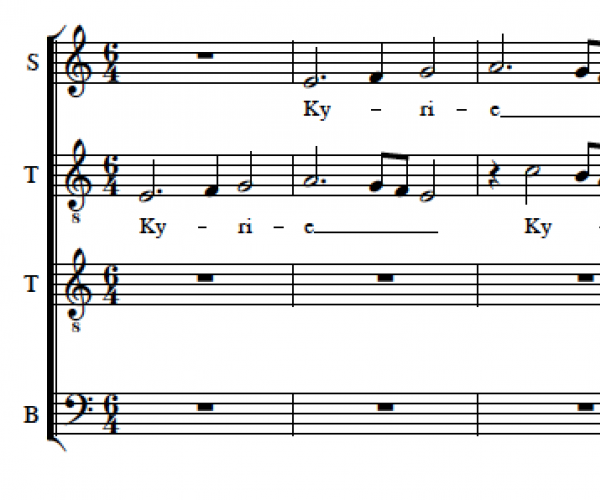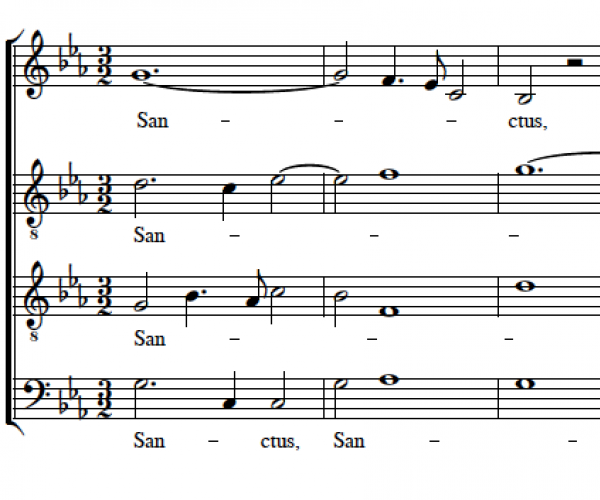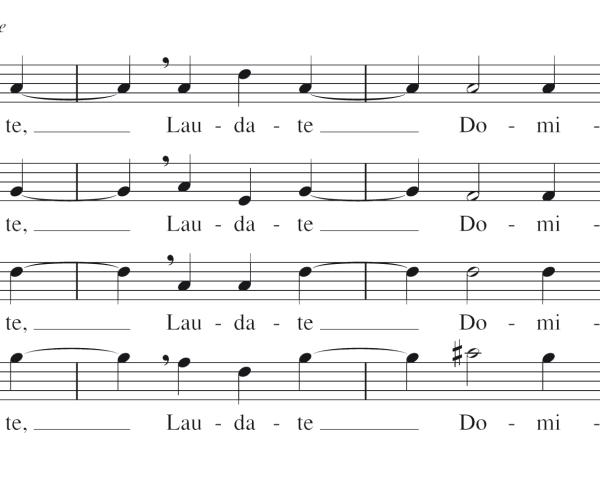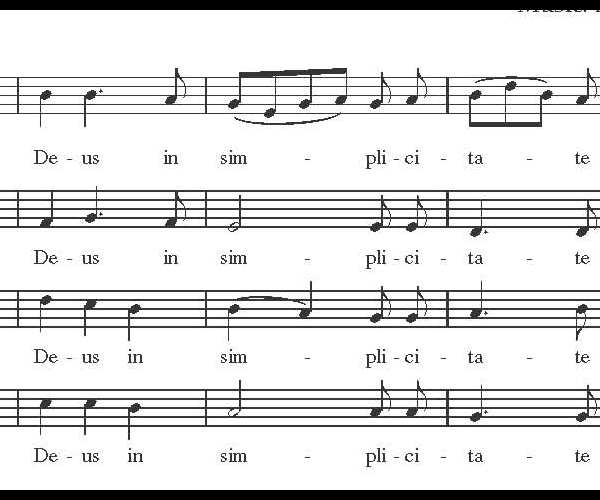Scores
Benoit wrote his opus 1 in the year that he obtained a first prize at the Royal Conservatory of Brussels. It became a double choir Ave Maria with divisi in the male voices.
A simple five-part motet as a vocal thanksgiving.
The Missa Nubentium - in nubes progredientium was written for the wedding of his daughter Tineke: Mass for those who marry, advancing in the clouds.
Norbert Rosseau wrote about six masses. This Missa in honorem spiritus sancti is dedicated to Noel Van Wambeke and Pros Goethals, the conductors of the cathedral choir in Ghent. This work is in Latin, later Rosseau would also write church music for them in Dutch.
Beata viscera was written in 2005 for the choral scores we published with the magazine Stemband of Koor&Stem. It is an easy and appealing composition in which all voices are assigned an interesting line.
From Dufay, the profane song l'homme armé would become one of the most beloved cantus firmi. It originated in the second half of the 15th century. The popular melody has been used in more than thirty masses during the Renaissance period, of which the ones in Dufay, Ockeghem and Busnois are the earliest in the series. Jacob Obrecht paid tribute to his teacher Antoine Busnois by copying his composition of this melody as cantus firmus identically in his Missa l'homme armé.
This mass has no exact composition date and originated somewhere between 1450 and 1480.
Laudate Dominum by Sebastiaan van Steenberge is a challenge for an amateur choir and a refreshing liturgical work.
With Domine Deus in simplicitate, Ludo Claesen takes us to Gregorian chant. The beginning of the composition refers to the original melody of the Gregorian hymn. Claesen does not literally copy the melody line, but retains the idea behind the practice: the melismatic singing or in other words, the singing of several notes on a syllable.
Paul Steegmans wrote a simple religious work: Ego sum panis, suitable for liturgy or concert.
Pages
Register for our newsletter
We keep you informed 4 times a year about repertoire news, info about Flemish composers, new acquisitions in our library, webshop or freely downloadable scores on Koorklank

